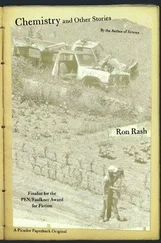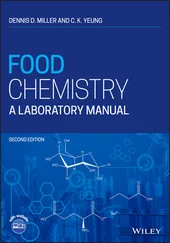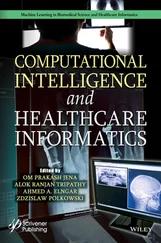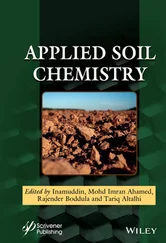Reviews in Computational Chemistry, Volume 32
Здесь есть возможность читать онлайн «Reviews in Computational Chemistry, Volume 32» — ознакомительный отрывок электронной книги совершенно бесплатно, а после прочтения отрывка купить полную версию. В некоторых случаях можно слушать аудио, скачать через торрент в формате fb2 и присутствует краткое содержание. Жанр: unrecognised, на английском языке. Описание произведения, (предисловие) а так же отзывы посетителей доступны на портале библиотеки ЛибКат.
- Название:Reviews in Computational Chemistry, Volume 32
- Автор:
- Жанр:
- Год:неизвестен
- ISBN:нет данных
- Рейтинг книги:5 / 5. Голосов: 1
-
Избранное:Добавить в избранное
- Отзывы:
-
Ваша оценка:
- 100
- 1
- 2
- 3
- 4
- 5
Reviews in Computational Chemistry, Volume 32: краткое содержание, описание и аннотация
Предлагаем к чтению аннотацию, описание, краткое содержание или предисловие (зависит от того, что написал сам автор книги «Reviews in Computational Chemistry, Volume 32»). Если вы не нашли необходимую информацию о книге — напишите в комментариях, мы постараемся отыскать её.
THE LATEST VOLUME IN THE
SERIES, THE INVALUABLE REFERENCE TO METHODS AND TECHNIQUES IN COMPUTATIONAL CHEMISTRY Reviews in Computational Chemistry
olume 32
Volume 32
Volume 32
Reviews in Computational Chemistry, Volume 32
Reviews in Computational Chemistry, Volume 32 — читать онлайн ознакомительный отрывок
Ниже представлен текст книги, разбитый по страницам. Система сохранения места последней прочитанной страницы, позволяет с удобством читать онлайн бесплатно книгу «Reviews in Computational Chemistry, Volume 32», без необходимости каждый раз заново искать на чём Вы остановились. Поставьте закладку, и сможете в любой момент перейти на страницу, на которой закончили чтение.
Интервал:
Закладка:
Library of Congress Cataloging‐in‐Publication Data Applied for: ISBN: 9781119625896
Cover design by Wiley
Cover image: © Abby L. Parrill
LIST OF CONTRIBUTORS
Orlando Acevedo, Department of Chemistry, University of Miami, Coral Gables, USA (Electronic mail: dbsorlando.acevedo@miami.edu).
Patrick Charbonneau, Department of Chemistry and Department of Physics, Duke University, Durham, NC, USA (Electronic mail: Patrick.charbonneau@duke.edu).
Coray M. Colina, Department of Materials Science and Engineering, George and Josephine Butler Polymer Research Laboratory, Department of Chemistry, University of Florida, Gainesville, USA (Electronic mail: colina@chem.ufl.edu).
Brian W. Doherty, Department of Chemistry, University of Miami, Coral Gables, USA (Electronic Mail: brian.doherty@nyu.edu).
Bernd Hartke, Theoretical Chemistry, Institute for Physical Chemistry, Christian‐Albrechts‐University, Olshausenstr. 40, 24098 Kiel, Germany (Electronic mail: hartke@pctc.uni‐kiel.de).
Ma. Belén Oviedo, Departamento de Química Teórica y Computacional, Facultad de Ciencias Químicas, Instituto de Investigaciones en Fisicoquímica de Córdoba (INFIQC), UNC‐CONICET, Universidad Nacional de Córdoba, Córdoba, Argentina (Electronic mail: beloviedo@gmail.com).
Shalini J. Rukmani, Department of Materials Science and Engineering, George and Josephine Butler Polymer Research Laboratory, Department of Chemistry, University of Florida, Gainesville, Florida, USA (Electronic mail: jayaramanrus@ornl.gov).
Bryan M. Wong, Department of Chemical & Environmental Engineering, Materials Science & Engineering Program, Department of Chemistry, and Department of Physics & Astronomy, University of California‐Riverside, Riverside, CA, USA (Electronic mail: bmwong@engr.ucr.edu).
Sharma S. R. K. C. Yamijala, Department of Chemical & Environmental Engineering, Materials Science & Engineering Program, Department of Chemistry, and Department of Physics & Astronomy, University of California‐Riverside, Riverside, CA, USA (Electronic mail: sharmay@ucr.edu).
Kai Zhang, Division of Natural and Applied Sciences, Duke Kunshan University, Kunshan, Jiangsu, China (Electronic mail: kai.zhang.statmech@gmail.com).
PREFACE
This book series seeks to aid researchers in selecting and applying new computational chemistry methods to their own research problems. This aim is achieved through tutorial‐style chapters that provide solid starting points and advice for novices as well as critical literature reviews highlighting advanced applications to illustrate current state of the art. Volume 32 continues this longstanding tradition. While each chapter has a unique focus, two themes connect the chapters in this volume. The first theme centers on methods that can be broadly applied to a variety of systems in Chapters 1and 2, and the second theme emphasizes special considerations required when modeling very specific system types in Chapters 3and 4.
Chapter 1highlights the vast space of local minimum energy structures of complex molecules to illustrate the importance of non‐deterministic global optimization (NDGO) approaches. Such approaches avoid visiting every region of search space, thus inevitably allowing for the possibility that the global minimum has not been found (otherwise the method would be deterministic!). Because NDGO methods lack a true convergence criterion, it is essential to use them properly to ensure meaningful results are obtained. Thus, the subsection titled “NDGO Tips for Absolute Beginners” should be bookmarked and reviewed regularly by new computational chemists applying NDGO methods to any problem. Bernd Hartke illustrates the humorous practice of naming NDGO algorithms after natural processes that have no parallels to the NDGO problem, but then breaks down the fundamental algorithm ideas into simple ingredients to identify similarities and differences between such algorithms. Important guidance on the use of NDGO methods include use of a two‐level strategy with combining exhaustive global search using inexpensive methods to calculate energies followed by local post‐optimization of selected results at high levels of theory as well avoiding single runs when using nondeterministic algorithms. This latter advice is one that would be well‐taken in many areas of computational chemistry and a piece of advice one of the book editors personally gives her students regularly! Chapter 1closes with a set of recent highlights such as the applicability of NDGO to a variety of optimization targets ranging from force‐field parameters to reaction networks.
Chapter 2focuses on the excited‐state dynamics calculations required to calculate electronic absorption spectra or to investigate electron dynamics of chemical systems irradiated by laser light. In particular, real‐time time‐dependent (RT‐TD) and non‐adiabatic dynamics calculations using the density functional tight binding (DFTB) formalism are explored. Stepwise tutorials on the molecule naphthalene, are given to provide researchers with practice applying these techniques to probe and understand the chemical dynamics exhibited in a simple system to prepare them for work on larger systems. Silver nanoparticles and nanoparticle chains illustrate applications of the method to large systems. After thoroughly exploring the electron dynamics of adiabatic systems in external electric fields using a single potential energy surface (PES), the theory and methods used to allow nonadiabatic evolution of nuclear position on different PESs are considered. Nonadiabatic evolution is essential for accurate modeling of photochemical and photovoltaic processes that involve transitions between PESs. Computational efficiency of DFTB has advanced to the point that applications in emerging areas of excited‐state chemical dynamics in large, complex systems are now within reach.
Chapter 3transitions from a focus on methodology to applications of methodologies to investigate a specialized type of chemical system, namely chemical systems that form microphases with periodic morphologies such as lamellae and cylinders. Microphases can form in diverse systems, ranging from aggregated colloidal particles to diblock copolymers. Charbonneau and Khang focus on the phenomenological field‐theory description of the order–disorder transition between ordered and disordered mesoscopic domains. Key challenges identified in the simulation of microphase‐forming systems are largely addressed used very coarse‐grained systems. Such models are capable of describing phase transitions with mesoscale patterns that occur over long time scales, a feat that is currently not computationally tractable using atomic or molecular systems. The theoretical and computational foundations of periodic microphase simulations are presented systematically, culminating in a lesson on determining phase transitions from such simulations. A series of classical Monte Carlo algorithms used to enhance sampling efficiency required to simulate disordered microphases and distinguish morphological regimes are discussed. Applications of free energy‐based methods to obtain equilibrium phase information in a range of systems illustrate the scope of applications currently within reach.
Chapter 4provides a comprehensive overview of deep eutectic solvents (DESs) and simulation methods to studying such systems. DESs are mixtures with far lower melting points than the individual components comprising the mixture, often formed by mixing a strong hydrogen bond acceptor with a strong hydrogen bond donor. The critical contributions of polarization effects to the behavior of such systems, and the long timescale of simulations needed to investigate many properties of interest, define the key trade‐off: While ab initio methods provide explicit treatment of polarization with limitations on simulation timescales and system size, nonpolarizable force fields can be applied to large systems and long timescales but lack explicit treatment of polarization. Following a comprehensive consideration of obtaining physical, thermodynamic, transport, and structural properties of DESs from simulations, Shalini Rukmani, Brian Doherty, Orlando Acevedo, and Coray Colina summarize non‐polarizable force fields as performing well for bulk properties, but poorly for reproduction of self‐diffusion coefficients. Charge scaling provided significant improvements while raising concerns about treatment of additives that may alter charge transfer magnitudes. Specific charge models from DFT cluster or ab initio MD simulations have also been implemented successfully, yet limit generalizability and transferability of the nonpolarizable force field they are implement into. Methods to study DESs are under ongoing development to address these issues.
Читать дальшеИнтервал:
Закладка:
Похожие книги на «Reviews in Computational Chemistry, Volume 32»
Представляем Вашему вниманию похожие книги на «Reviews in Computational Chemistry, Volume 32» списком для выбора. Мы отобрали схожую по названию и смыслу литературу в надежде предоставить читателям больше вариантов отыскать новые, интересные, ещё непрочитанные произведения.
Обсуждение, отзывы о книге «Reviews in Computational Chemistry, Volume 32» и просто собственные мнения читателей. Оставьте ваши комментарии, напишите, что Вы думаете о произведении, его смысле или главных героях. Укажите что конкретно понравилось, а что нет, и почему Вы так считаете.












